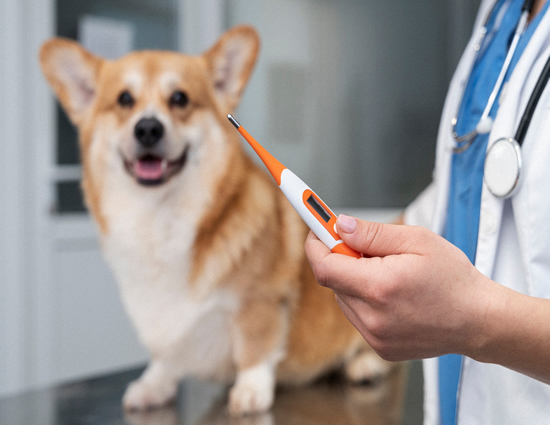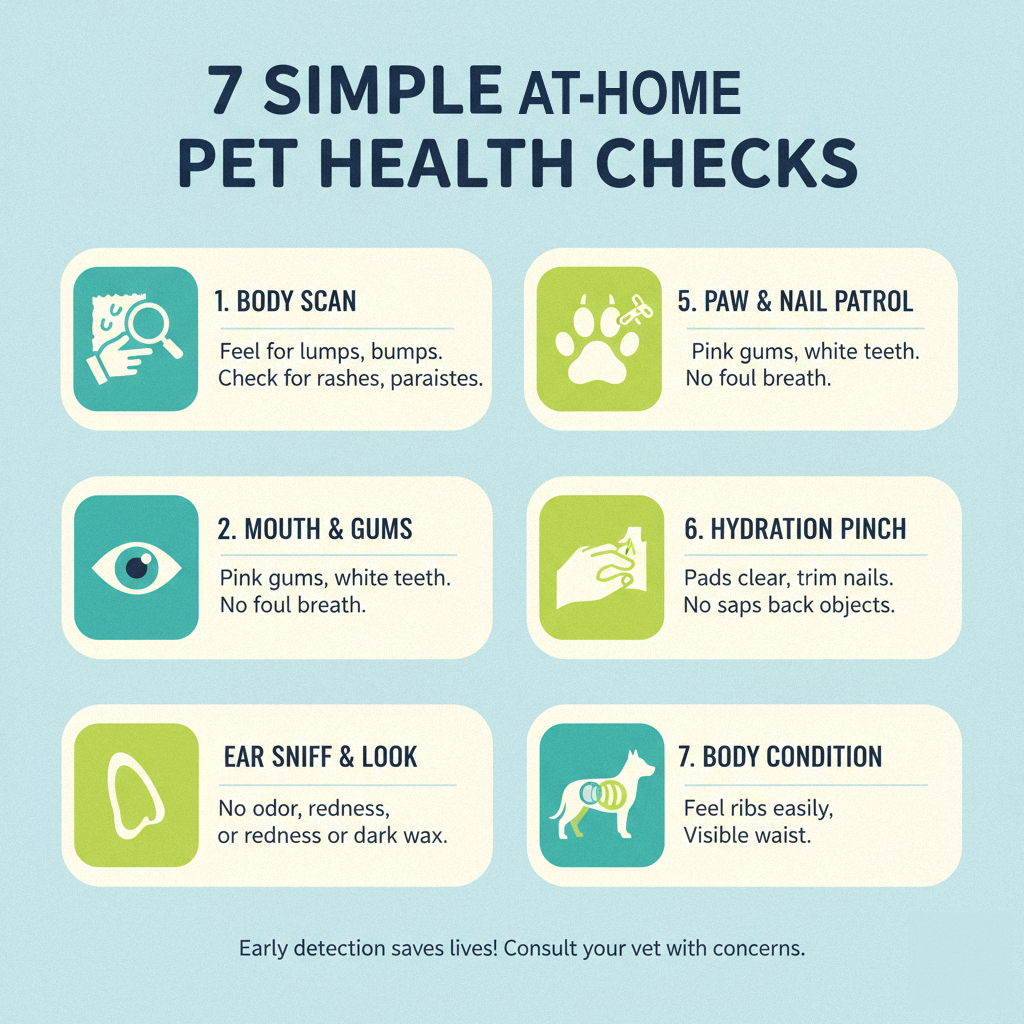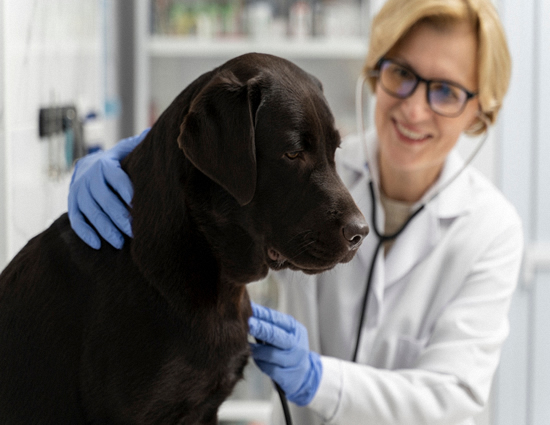7 Simple At-Home Pet Health Checks That Could Save Your Dog’s Life

Our dogs are masters of living in the moment, but they are also masters of hiding their pain—a stoic survival instinct inherited from their ancestors.
Because they cannot simply tell us when a tooth aches, an ear is infected, or a new lump has appeared, we must become their dedicated health detectives. While your veterinarian provides essential annual care, the 364 days between those visits are a long time for subtle health issues to develop unnoticed.
By incorporating a routine of simple, hands-on examinations at home, you become the first and most important line of defense in their wellbeing. These weekly at-home pet health checks are more than just a task; they are a powerful bonding experience that empowers you to spot potential problems at their earliest, most treatable stages, potentially saving you from future heartache and expensive emergency care.
Here are seven simple at-home health checks you can incorporate into your weekly routine.
1. The Body Scan (Skin & Coat)
Your dog’s skin and coat are excellent barometers of their internal health. Skin conditions consistently rank among the top reasons owners seek veterinary care, making this check-up crucial.
Spend a few minutes each week methodically running your hands over every inch of your dog’s body, from their head to the tip of their tail. Gently part the fur to see the skin underneath. You are feeling for anything that wasn’t there last week—new lumps, bumps, scabs, or areas of sensitivity.
A healthy dog should have a coat that is shiny (not overly greasy or dry) and skin that is supple and clear. Red flags that demand attention include excessive dandruff, bald patches, rashes, persistent scratching, or the presence of parasites like fleas and ticks. Finding a small lump can be scary, but discovering it early allows your vet to assess it when treatment options are greatest.
2. The Mouth & Gum Inspection (Dental Health)
Dental disease is one of the most common and overlooked health issues in adult dogs. In fact, the American Veterinary Medical Association (AVMA) notes that over 80% of dogs show signs of canine periodontal disease by the age of three. This is far more than just a cosmetic issue of “bad breath”; bacteria from infected gums can enter the bloodstream and potentially damage the heart, kidneys, and liver.
Once a week, gently lift your dog’s lips to inspect their teeth and gums. Healthy gums should be a firm, bubblegum-pink color (unless they have natural black pigmentation). The teeth should be clean and white, free from a brownish-grey, hard substance known as tartar. Red flags include exceptionally foul breath (worse than normal “doggy breath”), bright red or pale gums, excessive drooling, or visible tartar buildup. Catching these signs early can prevent painful extractions and systemic health problems down the road.
3. The Eye Exam
Your dog’s eyes should be bright, clear, and full of life.
This quick check can help you spot issues ranging from simple irritation to more serious conditions like glaucoma or infections. Gently hold your dog’s head and look directly into their eyes in a well-lit room. The whites of the eyes (the sclera) should be white, not bloodshot or yellowed. The pupils should be the same size, and the clear surface of the eye should be free from cloudiness. A small amount of clear, watery discharge can be normal, especially in the morning.
However, you should watch for red flags such as excessive squinting, pawing at the eyes, a cloudy or bluish appearance, or thick, yellow-green discharge, all of which warrant a prompt call to your veterinarian.
4. The Ear Sniff & Look
Ear infections are a frequent and painful ailment for many dogs, particularly those with long, floppy ears that trap moisture, such as Cocker Spaniels and Basset Hounds.
An early-stage infection is much easier to treat than a chronic one. Your nose is one of the best tools for this check. Lift the ear flap and take a gentle sniff; a healthy ear should not have a strong odor. Visually inspect the inside of the ear flap and the visible part of the ear canal. Normal ears should be clean, pale pink, and free of dirt and inflammation.
Any sign of a foul, yeasty odor, excessive head shaking, scratching at the ears, a dark and waxy buildup that resembles coffee grounds (a classic sign of ear mites), or visible redness and swelling are clear indicators that it’s time to seek veterinary advice.
5. The Paw & Nail Patrol
Your dog’s paws are their connection to the world, and they endure everything from hot pavement in the summer to icy, salt-treated sidewalks in the winter. Neglected paws can cause pain and affect your dog’s gait and overall comfort. Gently pick up each paw and look closely at the pads and in between the toes. The paw pads should be smooth and free from deep cracks, cuts, or blisters.
Carefully check between the toes for any foreign objects like burrs, pebbles, or grass seeds. Also, take note of their nails. If you can hear their nails “clicking” on the floor, they are likely too long and need a trim, as overgrown nails can force the toe into an unnatural position and cause arthritis over time. Consistent paw checks ensure your dog can walk, run, and play without discomfort.
6. The Hydration Pinch Test
Dehydration can occur quickly and is a symptom of many underlying illnesses.
This simple test, known as the skin turgor test, gives you a quick snapshot of your dog’s hydration level. Gently take a pinch of skin at the back of your dog’s neck, between the shoulder blades, and lift it up. When you release it, the skin should snap back into place almost immediately.
In a dehydrated animal, the skin will lose some of its elasticity and will return to place much more slowly, sometimes remaining in a raised “tent.” While not a perfect diagnostic tool, if you notice a sluggish return in the skin pinch test along with other signs like lethargy, dry gums, or sunken eyes, it indicates your dog needs water and a potential vet visit.
7. The Body Condition Score (Weight Check)
Maintaining a healthy weight is one of the most significant things you can do for your dog’s long-term health and longevity.
Recent studies from organizations like the Association for Pet Obesity Prevention (APOP) consistently find that over half of all dogs are overweight or obese, putting them at a higher risk for arthritis, diabetes, and heart disease. Instead of relying solely on the scale, use your hands and eyes. Run your hands along your dog’s ribcage. You should be able to easily feel their ribs with a light touch, similar to feeling the back of your knuckles.
From above, your dog should have a visible, defined waist behind the ribs. From the side, their abdomen should tuck up from the chest towards the hind legs. If you have to press hard to find the ribs or if there is no visible waist, it’s a sign that it’s time to discuss a diet and exercise plan with your veterinarian.
Putting It All Together
Consistency is the key to making these at-home examinations effective.
Set aside ten minutes once a week, perhaps during a Sunday evening cuddle session, to perform your routine. To track your findings, consider keeping a small health journal or a note on your phone. Jot down anything new you find, like the date you first noticed a small lump or a change in breath. This detailed history is incredibly valuable information for your vet.
Remember, the goal of these pet health checks is not to self-diagnose but to monitor and detect. You know your dog better than anyone, so if your intuition tells you something is off, trust it and make the call to your veterinarian.
Key Takeaways
- You Are the First Responder. As a dog owner, you are the most important observer of your pet’s daily health. You are in the best position to notice subtle changes before they become serious problems.
- Consistency is Crucial. Performing weekly at-home pet health checks creates a baseline of what is “normal” for your dog, making it much easier to spot abnormalities as they arise.
- A Nose-to-Tail Approach. A thorough check-up involves more than just a quick pat. Be sure to systematically examine your dog’s entire body, including their skin, coat, teeth, gums, eyes, ears, and paws.
- Monitor, Don’t Diagnose. Your role is to be an observer and data-gatherer. If you find something concerning during your at-home dog check-up, note it down and contact your veterinarian for a professional diagnosis and treatment plan.
- Weight and Hydration Matter. Simple checks for proper hydration and maintaining a healthy body weight are two of the most impactful things you can do to prevent chronic diseases and extend your dog’s life.
Final Thoughts
Being a proactive pet parent is one of the greatest gifts you can give your canine companion.
By integrating these seven simple evaluations into your life, you are doing more than just looking for trouble. You are strengthening your bond and creating a deep, intuitive understanding of your dog’s normal state of health. This routine transforms you from a passive owner into an empowered guardian, capable of catching problems before they escalate.
These regular pet health checks are a fundamental act of love, ensuring your best friend has the best possible chance at a long, happy, and healthy life by your side.
FAQs
1. How long should these at-home pet health checks take?
A thorough at-home check-up shouldn’t take long at all. Once you and your dog get into a routine, you can complete all seven checks in about 5 to 10 minutes. Many owners find it helpful to pair these checks with a regular grooming session or a quiet cuddle time to make it a positive and efficient experience.
2. What if my dog doesn’t like being examined?
If your dog is anxious or fidgety, start slowly. Begin by examining just one area per day, using plenty of praise and high-value treats to create a positive association. Keep the sessions short and always end on a happy note. Over time, this consistent and gentle approach to dog health monitoring will build their trust and make the process easier.
3. Are these at-home checks a replacement for a professional vet visit?
Absolutely not. These at-home pet health checks are a vital tool for early detection that supplements, but does not replace professional veterinary care. Your vet has the training and diagnostic tools to identify and treat diseases. Your job is to monitor your dog between those visits and bring any concerns to their professional attention.
4. I found a small lump on my dog during a check. Should I panic?
It’s natural to be concerned, but panicking isn’t productive. The most important thing is that you found it. Do not ignore it. Make a note of the lump’s size, location, and texture (is it hard or soft? does it move?). Then, schedule an appointment with your veterinarian for an examination. Many lumps are benign, but early detection is always the best course of action for any that are not.
















